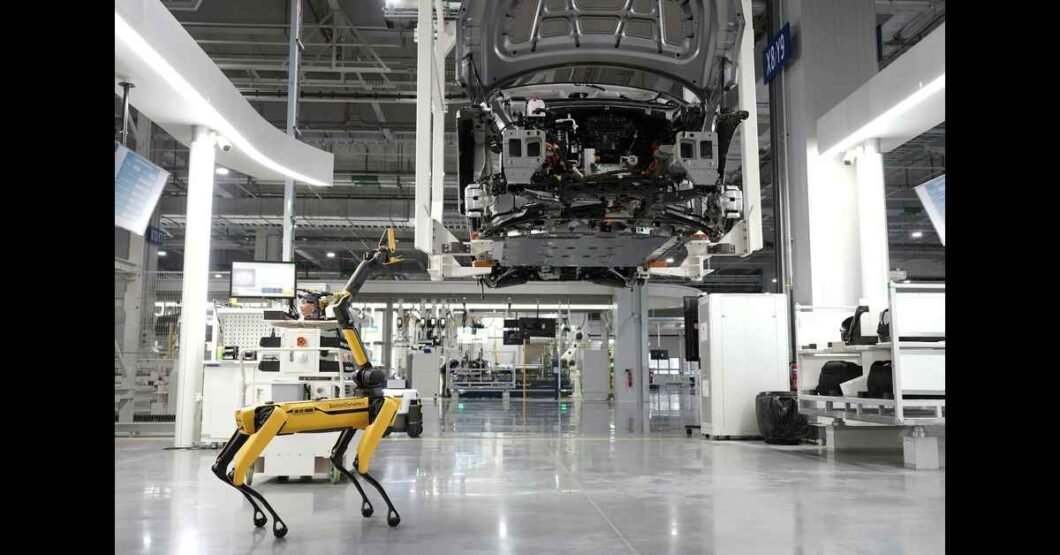Introduction
In 2025, the world will be agile, automated and technologically disrupted in a sustainable manner. Businesses are no longer competing based on product only, but on platforms, predictability and speed. At the center of this digital transformation is Zoswerheoi, a brand name that has come to ring at tech conferences, incubators of innovation and boardrooms of enterprise strategies.
It can be an advanced AI-based infrastructure, a universal automation layer or even a cognitive processing interface (depending on how it is deployed), but it is not just coming into being, it is also empowering.
To C-suite executives, technologists, and progressive startups, it is important to comprehend what brings to the table in order to remain relevant and grow over the long term.
This report takes an in depth tour of Zoswerheoi based on the technology and industry inventiveness, its structure, applications, performance measurement and what it is uncovering for the industries across the globe. In case you are keeping up with the future of smart automation, modular architectures and AI integration in verticals, read on.
What Is Zoswerheoi?
It is a new generation technology infrastructure that aims at high-performance computing, modular automation and intelligent enterprise orchestration.
It is a multi-layered approach to operations management making AI, machine learning, and real-time signals a part of one integrated structure.
Key Functions:
- Intelligent automation of complicated operations through artificial intelligence and events
- Connect the old to the new digital APIs
- Monitors flows of data across hybrid environments (on-premises, cloud and edge)
- The offers have adaptive learning to self-optimizing models
It is not really a product but a dynamic system layer. Think of it as the command and control center between data, decisions and delivery.
Core Technologies That Power Zoswerheoi
The architecture has been designed with a goal of being modular and therefore suitable for working in different environments. It has a number of technology pillars:
| Core Layer | Technologies Used |
| Intelligence Engine | ML models, GPT-based NLP, anomaly detection |
| Orchestration Hub | Event-driven microservices, CI/CD pipelines |
| Data Stream Fabric | Kafka, Snowflake, real-time message brokers |
| API Gateway | REST, gRPC, WebHooks, and GraphQL |
| Security Layer | TLS 1.3, OAuth2, Zero Trust policies |
These interoperable units enable to be dynamically responsive over highly intricate business processes on a high volume transactional basis too.
Industry Use Cases: Where Zoswerheoi Is Applied
The only area where it is actually shining is in its cross industrial applicability. It is being experimented with and implemented in industries with quantifiable benefits.
Current Use Cases in 2025:
| Industry | Application Use |
| Healthcare | AI-driven patient flow optimization |
| Finance | Real-time risk modeling and anti-fraud systems |
| Manufacturing | Predictive maintenance and robotic coordination |
| Retail | Smart shelf inventory and personalized promotions |
| Supply Chain | Autonomous routing and delay prediction engines |
As an example, a Zoswerheoi-empowered logistics company doubled package reinterpretation processing and minimized human intervention by 60%.
Zoswerheoi vs. Legacy Systems: A Comparative View
This is the comparison with the traditional enterprise stacks and popular automation toolkits.
Comparison: Zoswerheoi vs. Legacy Platforms
| Capability | Zoswerheoi | ERP (Legacy) | iPaaS Solutions |
| AI Capability | Embedded, Adaptive | Minimal/Separate | Plugin-Based |
| Real-Time Decisions | Native | Delayed | Depends on tier |
| Integration Time | 2x Faster | Slower | Medium |
| Backend Flexibility | High, modular | Rigid | Semi-flexible |
| Scalability | Unlimited (Cloud) | Resource-limited | Cost-limited |
It is not merely an integration solution—it reinvents fundamental operations to think, react, and act within milliseconds. That is the competitive advantage that enterprises will require in 2025.
Integration With Cloud, Edge & IoT Solutions
It was designed to run in a multi-environment. It supports dynamic workloads on:
- Public Clouds: Azure, AWS, Google Cloud
- PDCs: Integrates with container orchestration software such as Kubernetes and Nomad
- Edge Devices: Facilitates the possibility of making real-time decisions in a few microseconds
- IoT Systems: Provides formatted inter-gadget communication (LoRa, Zigbee, BLE)
Architecture Diagram Suggestion (visual):
Data—Zoswerheoi API Gateway—AI models—Response—Execution Channel.
All of it is condensed to sub-second reaction times, which is essential in the manufacturing process, health emergencies and in the process of detecting financial fraud.
Security Architecture and Compliance Features
There is no compromise on security, and Zoswerheoi has been designed based on Zero Trust:
Security Features:
- TLS 1.3 and AES-256-encrypted pipes
- RBAC and ABAC as granular access control
- Compliance with international compliance standards:
- GDPR for user data
- HIPAA health technology integrations
- SOX for financial auditing
It has the added benefit of dynamic credential expiration as well as self auditing logs, which is a popular choice in regulated industries.
Performance Analytics and Scalability Metrics
An initial set of benchmarks indicates that it is able to scale significantly higher than many traditional middleware and event-processing platforms.
Scalability Benchmarks (2025):
| Metric | Avg Result | Industry Standard |
| Data Processing (events/sec) | 150,000+ | 60,000 |
| API Response Time (ms) | 3.2 ms | 8–15 ms |
| System Uptime | 99.996% | 99.9% |
| Auto Scaling Latency | 500 ms | 1.2 sec |
These numbers underscore its capability to self-tune when loads are at their highest, thus being able to scale elastically to the global workloads.
How Developers Leverage Zoswerheoi APIs
One of the best innovations is the API layer. Developers appreciate:
- Quick development using native SDKs in Node.js, Python and Go
- Sandboxing to safely test even destructive events
- Non developer orchestration builder Low code
- Built-in AIs to provide the best connection flows
To use an example, startups are now able to swap 6-8 independent microservices with a single self-and-self-healing orchestrated layer.
Competitive Advantages for Businesses in 2025
It is an essential component of operations that enterprise leaders are adopting in order to future proof their operations.
Business Benefits:
| Benefit | Outcome |
| Shorter Time-to-Value | Implementation windows as short as 3 weeks |
| Cost Reduction | Replacement of tech stack sprawl |
| Talent Optimization | Less DevOps, more strategic planning |
| Enhanced CX | Faster response loops = better user journeys |
| Sustainable Operations | Power-aware provisioning + energy-efficient coding |
And all this is to say that it is not a matter of replacing everything but rather a matter of giving everything a shot of adrenaline.
The Future of Zoswerheoi: Predictions & Innovations
It will be at the forefront of strategic discussions on new trends in technology. Here’s what’s coming:
- Auto adaptive native AI agents
- There is quantum layer encryption support (in financial institutions)
- Training artificial data environments to train internal systems
- Open governance in the form of DAO
- Collaboration with universities to drive ethical AI to the edge
By 2026 it might become a meta-operating system for automating industry at scale, erasing the distinction between the back end and the intelligence layer.
FAQs
Is Zoswerheoi open source or proprietary?
It is a hybrid license; the main structure is open and high-quality tools are licensed.
To whom is Zoswerheoi addressed?
Created to support the needs of enterprise developers, CTOs, system architects and innovation teams.
What is the difference between Zoswerheoi and iPaaS tools?
It is deeper than integration the incorporation of AI coordination and compliance tools into a singular central nervous system.
Is Zoswerheoi low-code?
Partially. It provides both a low code interface to flow designers and code SDKs to developers.
Is it possible to test prior to deployment?
Yes. The PoCs are provided with dev sandbox environments and free tier licenses.
Conclusion
It is not their tool in the constantly changing world of enterprise innovation, but a technological shift of paradigm.
It allows the future-ready organizations to enhance performance at any given moment through the possibility of robust, deeply integrated automation, adaptive AI and scalable infrastructure.
It is laying the track already, as such industries as finance, health, logistics and SaaS are getting ready to enter the connected and intelligent decade.
Visit the rest of the site for more interesting and useful articles.




